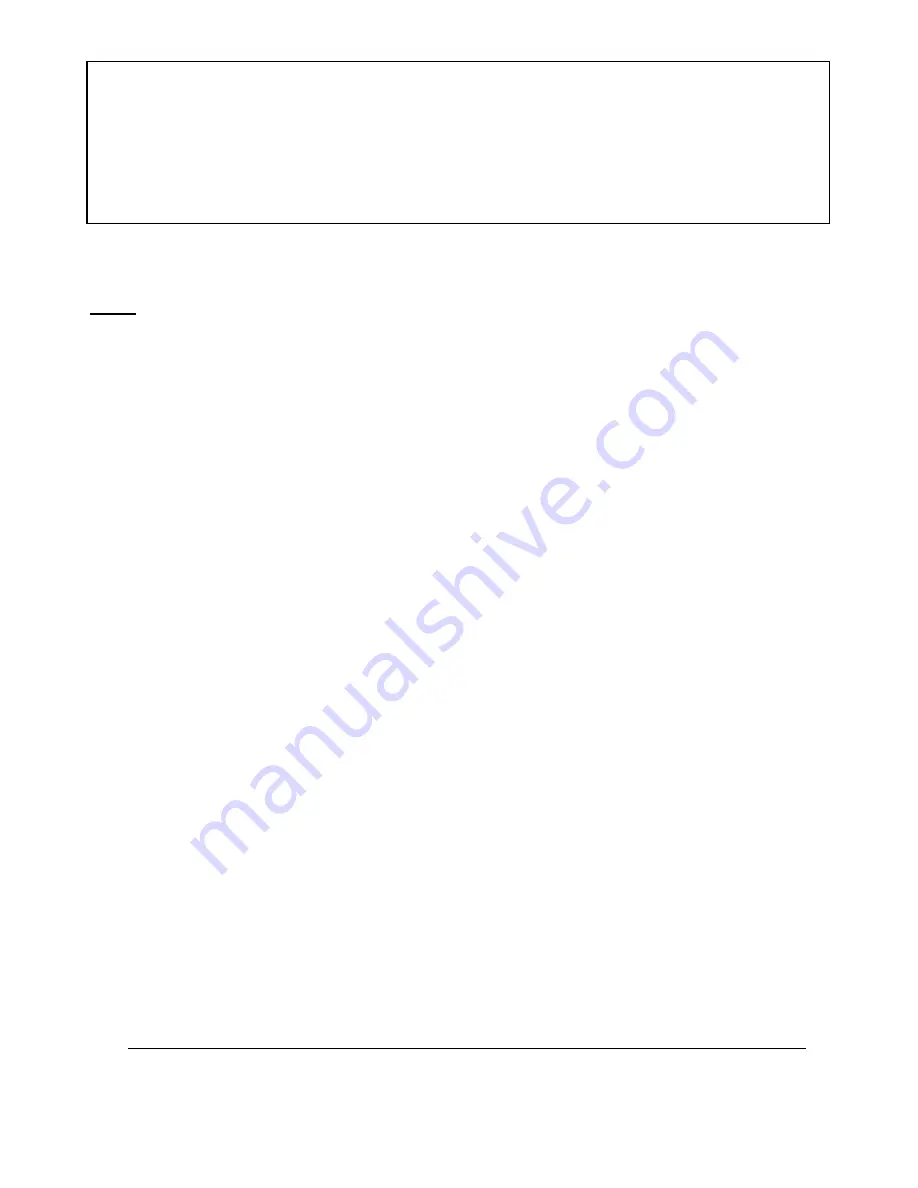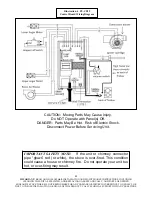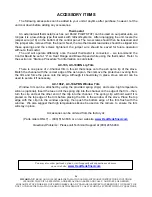
IMPORTANT!
READ AND FOLLOW
ALL
INSTALLATION AND MAINTENANCE INSTRUCTIONS, INCLUDING
CLEANING THE UNIT AS SPECIFIED, AND REPLACING GASKETS ANNUALLY, AND PARTS AS NEEDED.
ENGLAND’S STOVE WORKS IS NOT RESPONSIBLE FOR ANY DAMAGE OR INJURY INCURRED DUE TO NEGLECT, OR
DUE TO UNSAFE INSTALLATION OR USAGE OF THIS PRODUCT. CALL TECHNICAL SUPPORT WITH ANY QUESTIONS.
9
FLUE SYSTEM
Caution: Follow the pipe manufacturer’s installation instructions and directions for passing
through combustible walls and ceilings.
Be sure to check local codes in your area.
NOTE: See the installation drawing later in this manual (Illustration 1).
This unit is equipped with a negative draft system that pulls combustion air through the burn pot
and pushes the exhaust air out of the dwelling. If this unit is connected to the flue system other than
the way explained in this manual, it will not function properly.
For any of these installations, keep in mind that each elbow used reduces draft by 15%; it is good
practice to add 3’ (three feet) of vertical rise for each elbow used. Example: After the 2
nd
elbow
used, have 6’ (six feet) of vertical rise before terminating your vent pipe.
Pellet Vent Pipe
The UL approved (ULC if Canada) pellet vent pipe that we recommend is a twist lock system;
however, it is still recommended that high temperature silicone (
AC-RTV3
) be used at each joint.
England’s Stove Works recommends the use of Dura-Vent
twist-lock pipe (
AC-3000 kit, AC-33000
if Canada
) - if you use other pipe, consult your local building codes and/or building inspectors, and
secure each joint with at least three screws—see Important Information, above.
Do not
use “B” vent
gas pipe or galvanized pipe with this unit. The pellet pipe is designed to disassemble for cleaning
and should be checked several times during the burning season — pellet vent pipe is not furnished
with the unit and must be purchased separately. For installations over 4000 ft. above sea level the
exhaust should be vented with 4"pellet vent pipe (
AC-3100 kit, AC-33100 if Canada
).
Do not
install a flue damper of any kind in this system, and do not connect this unit to a flue system
serving another heating appliance.
Through the Wall
To vent the unit through the wall, connect the pipe adapter to the exhaust motor adapter. If the
exhaust adapter is at least eighteen inches (18”) above ground level, a straight section of pellet pipe
can be used to initially pass through the wall (see
Illustration 1
). Your dealer or our factory should
be able to provide you with a kit that will handle most of this installation, which will include a wall
thimble that will allow the proper clearances through a combustible wall. Once outside the structure,
a three-inch (3”) clearance should be maintained to the outside wall and a clean out tee should be
placed on the pipe that extends through the wall. We require a minimum of three feet (3’) of vertical
pipe with a 90-degree turn away from the house. At this point, a one-foot (1’) section and horizontal
cap will complete the installation (see
Illustration
1
).
A wall strap should be placed just below the last 90-degree section to make the system more
stable. If you live in an area that has heavy snowfall, it is recommended the installation be taller than
three feet (3’) to get above the snowdrift line.
The same type installation can be used if your stove is below ground level by adding the
clean-out section and vertical pipe inside until ground level is reached. However, we recommend
basement installation be performed only by a professional installer. For basement installations, a 3”
(three inch) pipe and coupler must be used for Outside Combustion Air, and a minimum clearance of
3’ (three feet) must be maintained outside the dwelling from the ground to the Pellet Vent Exhaust
Pipe. We require a three foot (3’) minimum vertical rise on the inside or the outside of the dwelling.
IMPORTANT NOTICE: This unit must be properly installed to prevent the possibility
of a house fire or “smoke-back.” The instructions must be strictly adhered to.
Do not use makeshift methods or material which may compromise the installation.
Your unit requires periodic maintenance and cleaning (refer to manual). Failure to
maintain your unit may lead to a variety of problems, including but not limited to
smoke spillage into the home. England’s will not be liable for consequential or
indirect damages to property or persons resulting from the use of this product.
Summary of Contents for 25-PDVC
Page 39: ......










































